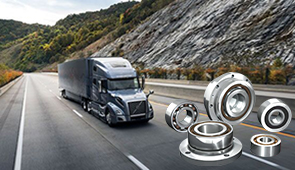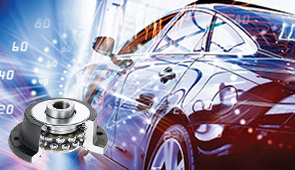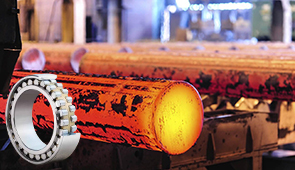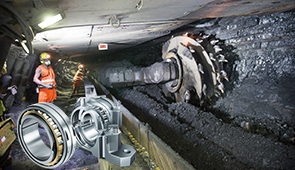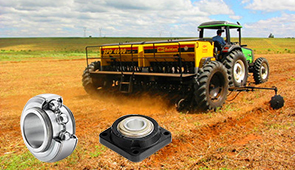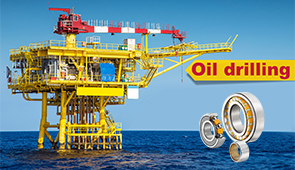Understanding C3 Clearance in Radial Ball Bearings
Precision and reliability are paramount in the engineering world, especially when dealing with components like radial ball bearings that serve as the backbone for countless mechanical systems. One critical factor that determines a bearing’s performance is clearance, with C3 clearance being a commonly specified option. But what exactly is C3 clearance, and why does it matter? This article will unravel the technical intricacies of C3 clearance, exploring its purpose, applications, and influence on bearing operation. Whether you’re an engineer, a technician, or an industry professional, understanding this key specification is essential for optimizing machinery performance and longevity.
What is C3 Clearance in Ball Bearings?

Definition of C3 Clearance
C3 clearance refers to radial internal spacing, which is greater than the normal clearance CN for a bearing. Clearance describes the total distance that either of the bearing rings can move about the other in the radial direction. Specifically, C3 clearance is set aside for situations where thermal expansion, increased speeds, and operational loads may induce stress internally to ensure smooth, efficient operation of the bearing.
This additional clearance becomes critical when bearings are designed to operate at elevated temperatures. Increased temperature may cause more expansion of the inner ring than the outer ring which could lower the clearance and cause binding. C3 designation theremore, ensures these allowances, preserving functional efficacy without compromising performance or life span in high-demand applications.
C3 clearance bearings are often applied in automotive and other industrial applications, heavy machinery or electric motors due to the cyclically high speeds of rotation or range of temperatures. Proper adjustment on bearing clearance including C3 specification when needed greatly reduces the possibility of operational failure due to excessive friction or wear, ensuring machinery perform reliably and durably.
Importance of Internal Clearance
The internal clearance of bearings means the very small design intentional gaps that exist between the rolling elements and the inner and outer rings. This internal gap could matter for the performance of a bearing and its functionality, efficiency, and life span of the machinery. Internal clearance that is fitted well enables bearings to function within an optimum range of friction and load-bearing ability while mitigating risks of overheating or early failure.
Thermal expansion, which is the increase in dimension of mechanical parts when they operate at elevated temperatures, is catered by proper internal tolerance. If there is inappropriate clearance, expansion due to heat will place a severe strain on bearing parts, risking deformation or lock-up. Bearings that fall under such categories are said to have the correct internal clearance, for example, C3 rated for high temperature or high speed operations.
Not stress concentration, which leads to wear or fatigue, is prevented by internal clearance, which aids in the distribution of load within the bearing. Accuracy in selection of internal clearance value is dictated by relevant operating speed and temperature, as well as the load to be carried. Standards set by the industry may be very beneficial when trying to determine the accuracy estimate to obtain the exact specifications and tolerances meant to dictate reliability and durability for the machinery during its design stage.
Comparison with Other Clearances
While comparing internal clearance with the radial and axial types of clearances, it becomes necessary to understand each of their specific attributes in bearing function. Internal clearance concerns itself with the amount of movement, in loading conditions, the rolling elements of a bearing can make within a bearing before it is fitted, or moves freely without load. On the other hand, radial clearance accounts for movement parallel to the shaft, which is towards or away from the bearing, while axial clearance accounts for movement parallel to the shaft. These formulate interdependent measurements, however, all serve distinct operational requirements, enabling the bearing to simultaneously adapt to different changing conditions.
Bearing system dependent factors, such as internal clearance, affect preload, bearing operating temperature, and contact stress distribution. A certain level of internal clearance will result in excessive friction and overheating, while too much allowance creates free play that promotes misalignment, noise, and an overall drop in system operational efficiency. Often viewed as constraints, radial and axial clearances allow greater freedom to account for operational irregularity, but their optimal combination with internal clearance should not demote bearing performance. All of these clearances working optimally together provide mechanical stiffness, fatigue resistance, while greatly increasing bearing service life, while ensuring reliability.
Applications in robotics and aerospace tend to move towards fully balanced active motion, or low vibration sequencing, and tighter tolerances across all clearances. On the contrary, balance, unlike that found in mining and heavy machinery, tends to use larger clearances to account for severe loads and environmental factors. In any case, the clearances chosen, whether inter, radial, or axial, need to function in unity to fulfill operational demands while enhancing system dependability.
How Does C3 Bearing Clearance Work?
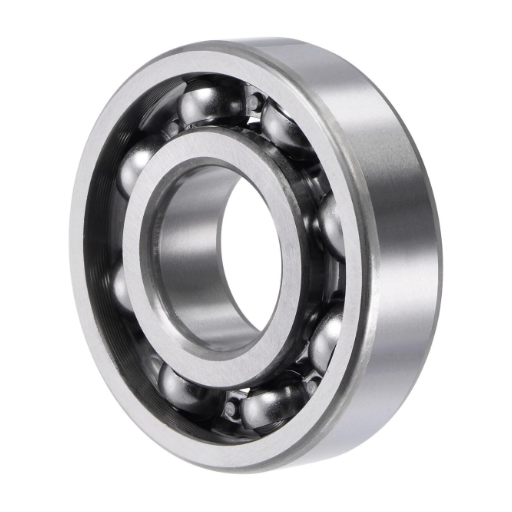
Role of the Inner Ring and Outer Ring
Both the inner ring and outer ring of a bearing are important components that assist in enabling the system to function effectively, handle loads, and maintain reliability. Their cooperation is important to control the bearing effectively to aid in movement and enable sufficient functions. The following is a list of five important functions of the outer and inner rings:
- Load Distribution: Together, the outer rings and inner rings aids in transferring the radial and axial loads alongside the rolling elements which enables the rolling parts to spin freely. This even distribution of stresses minimizes the chance of the bearing facing damage due to high stress areas and thus increases the durability of the bearing. Their measurements and space greatly influence the load-bearing capability.
- Rotational Support: The inner ring contacts and revolves with the shaft which attaches the inner part of the bearing while the outer part is fixed to the house. The stationary outer part is encapsulated top enable the motion transfer while protecting the movement precision alongside the bearing housing.
- Alignment Control: Alignment Control“ Primarily, both the rings should not be placed too closely or too far to avoid strange forces which may damage them or lead to the automatic rotation for extra use, thus causing early unwanted the lifespan to decrease prematurely. The C3 range is important to allow the ball to expand or shift while not affecting the overall structure and performance limits.
- Reduction Of Friction: The design features of the inner and outer rings make polished finishes work for the rolling elements to improve the system efficiency and energy loss further decrease energy loss due to smooth motion friction.
- Contamination Protection And Sealing: The outer ring usually has some form of a seal or a shield in place with the aim of preventing external contaminants like dirt, moisture, and debris from entering the bearing assembly. This is important for rugged application use in extreme temperatures to enhance reliability and protection.
These functions show the importance of inner and outer rings in the bearing assembly which is made for certain clearance configuration C3 to increase efficiency and increase service life.
Effect of Radial Load on Clearance
Radial load bears importance concerning the operational features and average life of a bearing. Its impact is related to the internal clearance and affects performance as well as wear. Below are five detailed effects of radial load on clearance:
- Decrease in Initial Clearance: Bearing operation under a radial load tends to compress internal capsule clearance since the load pushes the rolling elements against the raceways. This reduction serves to interfere or change rotation and may even change performance indicators like increase in speed and vibration.
- Frictional Heating: Increased radial loads often lead to greater contact pressure between rolling elements and the raceways, leading to higher friction. This friction generates heat but may further lower internal clearance, showing that the bearing components will expand thermally.
- Possible Load Related Offsets: Not evenly or radially applying loads will cause meshing and misalignment within the bearing. Their oblong shapes will cause certain portions of the bearing capsules to erode more due to the wedges accelerating shaft rotation in the defined gap clearance.
- Change of The Position of The Rings: Boring components on the machine will not overlook gravtational and centrifugal forces resting at the pivot anchors of the machine. Elevating radial loads will bring unpredictable angles of attack to loads which may force oblong shafts to lack in the defined gap of turnover hence overturning the positioned gap control frame dial or position system of open gap control.
- Impact on Lubricant Performance: Lubricants in the bearing machines are radially loaded as they affect the distribution of lubricant within the bearing. Axial loading can also decrease related spacing, which increases operational temperature and the chances of surface failure or wear.
These phenomena demonstrate the impact of over excessive load estimation concerning bearing assemblies in motion and the importance of precise adjustment of clearances in terms of bearing lifetime extension.
Impact of Operating Temperature on Performance
Operating temperature is one of the factors that can affect the performance of bearing systems, and the range of operating temperatures can have a great impact on a bearing’s life, performance, durability, and efficiency. The five main ways bearing performance impacted by operating temperature are listed below:
- Change in Lubricant Viscosity: An increase in temperature results in a reduction of the viscosity of lubricants. The resultant thin lubricant film can result in metal-to-metal contact, increased friction, and fast wear. Whereas at lower temperatures, lubricant can become too thick, preventing proper circulation, thus hampering lubrication.
- Contraction and Expansion of Material: The making of bearings involves the use of materials that are extermely sensitive to changes in temperature. Bearings are susceptible to having its dimensions altered due to high temperature which reduces clearance and in extreme cases causes the bearing to seize. Permanent structural failure is also caused by deformation of material due to long exposure to excessive temperature.
- Reduced Fatigue Life: Increased temperature of operation vastly increases the chemical degradation and oxidation on the materials which weakens the bearing’s fatigue life. Also microstructural change from heat to bearing steels due to the change will weaken the load bearing capacity over time and this will be compounded by change in having bear force during that time.
- Seals and Grease Degradation: Set seals can fail at higher operating temperatures as they may warp or degrade. This failure in retaining lubrication would also let contaminants to freely enter, which would be very damaging. Similar consequences would take place if grease is used, this, which also evaporates, oxidizes or breaks down at high temperatures would directly lead to system failure.
- Lower Temperature Corrosion Risk: Operating at significantly low temperatures tends to form condensation, particularly during start-stop operations. The moisture within the bearing would create a highly corrosive environment, leading to pitting and surface damage, which is highly detrimental to performance.
These risks can be considerably lowered by choosing suitable bearing and materials in conjunction with oil whose working temperature is within the specified range. Implemented restrictions on these systems such as properly monitoring the working temperature of the bearing, cooling, heating or insulating can very much improve bearing performance under changing temperature conditions.
Why Choose Deep Groove Ball Bearings with C3 Clearance?
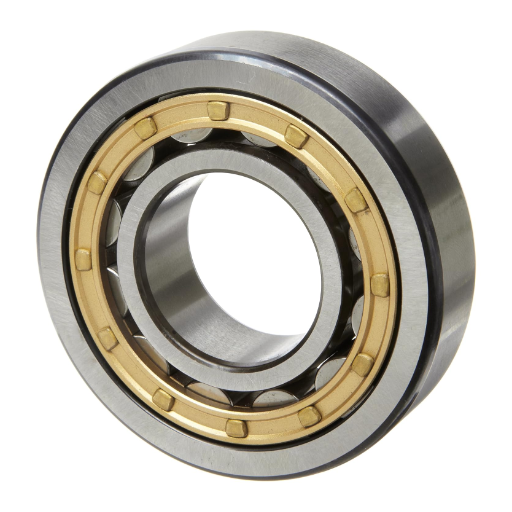
Benefits for High-Speed Applications
Ball bearings with deep grooves and C3 clearance are designed for high-speed applications. Heavier internal clearance suffers less frictional forces, can more conveniently endure thermal expansion during operation, and the chances of internal bearing friction under changing situations and actions are much lower. These bearings are designed with five benefits to enhance work in accelerated environments:
- Increase Allowable Operating Temperatures: Due to the additional mechanical space within the C3 settled bearings, the scope for endurance-expansion due to rotational accelerative motion increases further further compensating for the overheating bearings. Therefore, overheating decreases, whilst being able to compensate for system performance.
- Friction Decrease: Thanks to this C3 internal bearing clearance, resultant stress forces along the bearing axis are less than the contact force within the rolling elements, and therefore, smoother work is achieved while lessening system wear, most importantly for continually tasked high-speed devices.
- Improvements withstanding Extremes: Extra mechanical control is bearable by C3-s claimed structure due to stronger capabilities on stresses and vibrations effects on the rotating components of the bearings. Less wear allows for longer functionality periods which reduces rotating tools downtimes and brings potential savings for system repair while also decreasing overall stressed maintenance required.
- Persistent Lubricant Dumping: The reduction of working space scope on aids and enable broader spread throughout the rolling elements hugging components which improves assuring allowance while also further decreasing the chances of wear. These bearings with C3 clearances would enable changes in needs by the tools and require less energy expenditure from the tools in engages with improving device shift energy requirement places.
- Increased Load Capacity While Pushing Speeds: Implementing C3 clearance deep groove ball bearings helps in the more effective management of dynamic loads in high-speed applications. Their capacity to handle both radial and axial forces makes them suitable for a wide assortment of applications, ranging from electric motors to industrial machinery.
For scenarios with elevated operational speeds where dependability and efficiency standards are high, deep groove ball bearings with C3 clearance afford the best solutions.
Adaptability to Thermal Expansion
The usage of Deep groove ball bearings with C3 clearance is evident in dynamic systems for high thermal or high-speed operations. In systems where high levels of thermal expansion exist, bang clearances affect the inertia moment of the system and can significantly worsen friction, performance, damage tolerances, and even failures. The C3 configuration employs internal clearance greater than standard; the addition of C3 allows the bearing to function without seizing due to changes in heat. The features of C3 provide adaptability and help sustain levels of operational productivity even in uncontrolled environments.
Advantages of C3 clearances can be observed in many places in industrials such as automotive engines and food processing plants, where increased wear is commonly caused by high impacts and thermal resistance changes. In systems that experience temperatures below 120 degrees Celsius, one would find that standard bearings will frequently stop working because of thermal expansion and stress. C3 clearance would allow gapping, which helps mitigate torque with thermal expansion. This results in an extended life of the system and reduced wear from lower-quality components.
In addition, these innovations in materials science, along with development in manufacturing, have changed adaptability to thermal expansion. Today, cutting tools and steel alloys precision finished to controlled diameters are commonplace, as they augment thermal conductivity and resistance to deformation. Moreover, advanced lubricants for C3 clearance bearing protectors reduce heat accumulation due to friction, which enhances performance under thermal stress. With these improvements, deep groove ball bearings are still evolving to sustain contemporary industry requirements for heightened efficiency, endurance, and energy use minimization.
Suitability for Electric Motors and Gearboxes
The application of deep groove ball bearings in electric motors and gearboxes is particularly owing to their operational efficiency, precision, and reliability. The design of these bearings allows them to accommodate both radial and axial loads, which makes them adaptable in systems dealing with balanced load distribution. Electric motors benefit from the energy efficiency and lower operational costs, deep groove ball bearings aid with through energy loss mitigation resulting from low frictional torque. Furthermore, these bearings allow for the management of thermal energy, making them ideal for high-speed motors.
Deep groove ball bearings also allow for seamless power transmission in gearboxes by providing high resistance to misalignment while maintaining rotational accuracy. Ranging from the use of high-deformation-resistant steel to advanced materials engineering, precision manufacturing techniques have been able to achieve further improvements in the operational lifespan of these bearings. Optimized internal geometry has been shown through testing to reduce vibration levels up to 30%, further quieting the operation of electric motors and gearboxes.
Furthermore, contemporary deep groove ball bearings are equipped with seals or shields to restrict contamination and leakage of lubricants to protect the bearing. This is critical in achieving the performance requirements necessary in severe industrial settings. These improvements provide further support to the industrial intent for sustainability efforts, increasing the usability of the components in electric motors and gear boxes.
How to Measure and Adjust Bearing Clearance?
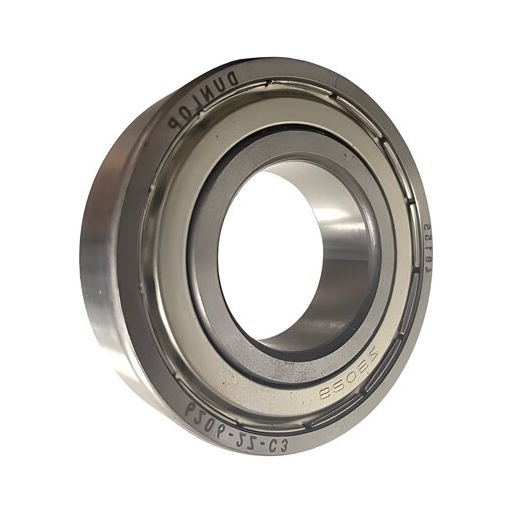
Techniques for Measuring Internal Clearance
When measuring internal clearances, my first step is ensuring that the technique and tools selected fit the bearing type and application. In most cases, I measure the clearance using precision gauges, either a feeler gauge or a dial indicator. I always confirm that the bearing is unmounted and uncontaminated because any dirty residue might influence measurement accuracy. While measuring which could be radial or axial clearance, I insert a feeler gauge into the rolling element, then into the raceway.
To adjust internal clearances, I apply effective mounting strategies while carefully controlling interference fits. I apply a lock nut or hydraulic to tapered bore bearings after mounting the shaft to attained desired clearance. Other cylindrical bores may require some shimming or spacer modification but should stay within operational clearances set by the manufacturer. One other thing I keep in mind is temperature as the operating clearance can be affected significantly altered due to thermal expansion.
At last, I confirm my findings against the specifications provided by the manufacturers to check if there are no discrepancies and the application can still work with the installation. Too much or too little clearance may lead to excess heating, abnormal usage, or even early breakdown of the bearing. I ensure that I follow these meticulous and structured procedures so that the bearing assembly will perform optimally within its intended range, thereby increasing service life and decreasing maintenance requirements.
Adjusting Radial Clearance for Optimal Performance
Like any mechanical system, a bearing assembly system requires a well-planned strategy integrated into the highest technical standards. Radial clearance in bearing assemblies’ optimal ranges needs to be both simulated and verified using calipers, feeler measurements, or specialized clearance measurement tools, then matched against provided specifications to ensure operational loads, speeds, and temperature ranges are met.
Modern techniques benefit from using laser alignment systems alongside ultrasonic testing which allow for unmatched accuracy in expansion adjustment processes. During alteration to operating thermodynamic forms, factors such as thermal expansion need to be taken into account, relying on thermal compensation charts engineering data offers. Moreover, specific materials’ coefficients of expansion provide precise range limitations.
In regard to bearing preloads and force equilibration, real-time vibration and temperature sensor monitoring allows for operational adjustments on the fly. While optimizing operational efficacy and predicting malfunction risk due to imbalance scope tightness or looseness yield excelled downtime and long-term value.
With the implementation of these modern strategies and technologies, engineers can not only fulfill the demanding standards of today’s complex industrial tasks, but also enhance the reliability and efficiency of bearings in particularly challenging settings.
Ensuring Proper Fit in Single Row Bearings
Bearing fitment serves as an enabler of performance, efficacy, and durability of any machine system it is utilized in. Ensuring optimal fit in single row bearings is pivotal to minimizing the efficiency issues of vibration, imbalance loads, and functional failure of a rotating component. Rotating members of machines, such as shafts and housings, accommodate thermal and kinetic force changes, which impact friction and tangential forces that affect fit alignment. Any misalignment, irrespective of bearing tightness, renders the shaft inoperable as it will be subject to deformation or slipping.
It is a known fact that a crucial factor affecting optimal fits and boundary allowances is the use of broadly defined specifications for parts such as bearings and housings provided under ISO 286 standards or ANSI B4.1. These standards highlight the allowances for deviations in measurements of parts created with precise geometry. For example, the presence of a claimed gap or space within assembled parts allows the elimination of interfacial friction, which increases rotational speeds and less stress in highly demanding scenarios. Nonetheless, gaps paving the way for slight movement within rotating parts help eliminate the risk of mechanical contact.
For choosing the best fit, critical dimensions like shaft diameters, housing bores, and operational clearances should be precisely measured. Effective measuring devices like electronic micrometers and bore micrometers guarantee accuracy during machining. The physical comportment of different fits concerning different operating conditions can also be predicted using computational modeling and simulation software.
By blending fundamental engineering techniques and modern technology, industries have striking between rigid attachment and systemic movability that ensure reliable single row bearing functionality across numerous highly challenging applications.
Common Problems and Solutions for C3 Bearings
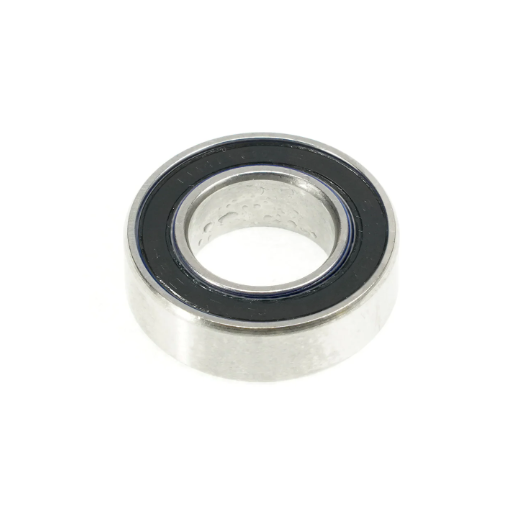
Troubleshooting Thermal Issues
Excessive and uncontrolled wear on C3 bearings is one of the most common problems around the world, as it leads to very serious consequences such as failure of a machine or even an entire system. The key sources of heat lubricating problems in bearings include bearing overheats, misalignment, excessive loading of bearings, poor alignment of axes, and contamination with dirt particles, which could be addressed with a certain level of penetration using a practical or theoretical approach.
Use of proper heuristics in the right amount with adequate control measure will reduce overheating from lubrication systems. Improvement of modern bearing temperature measuring devices make it possible to install stops at real time remote observation of the temperature, enabling the reduction of inappropriate lubricating without removing the bearing. Integration of temperature control systems with advanced monitoring systems based on self-learning systems can help detect and rectify lubricating issues globally.
Rotational misalignment of supporting shafts of powerful apparatus should be conducted by specialized distinct high precision instruments (like laser suggestion devices). Moreover, the range of appropriate load distribution expected needs to be observed for both radial and axial directions with respect to the bearing during the observing period.
Another reason for the increased heat in C3 bearings is temperature Contamination which includes debris or moisture ingress. Cleanliness during installation is crucial to hygiene as loose contamination risks persistent issues. Contamination is best detected and managed with the use of routine inspections and particle counters which provide effective cleaning and replacement at required elevation levels.
Further, over exposure to high temperature can lead to excessive bearing fit, clearance and thermal expansion which may possibly damage the bearing. Both structural and component bearings can be enhanced through imaging thermography for localised or reactive hot spots and application of resistant materials adjacent to heat critical areas.
Using these proven strategies assists most industries in resolving thermal problems within C3 bearings, helping them achieve required construction precision and maximizing the machine’s lifespan.
Dealing with Radial Load Variations
Mitigating radial load variations can be achieved through the use of high-precision machining and assembly techniques that ensure the structural integrity of the bearing components by providing optimal control over the dynamic stress factors. Dynamic stress factors, which influence the operational integrity of bearings and interconnected machinery, are influenced by radial load variations. Uneven force distribution, misalignment, and transient (shock load or speed) operational conditions are some of the radial load variability. Strain gauge-based sensors monitor load distribution in real-time, providing instant data, which aids in mitigating variation impacts. Finite element analysis (FEA) done during the design phase also enables engineers to foresee weak points and optimize load distribution geometry on components.
Bearing radial load variation can also be approached by selecting bearing types with optimized raceway geometries, materials with enhanced fatigue limits, or lubricating them. Variable load exacerbating lubricants increase wear under shifting forces, thus, consistent quality lubrication is essential. Providing sustained film thickness with advanced lubrication systems protects against early bearing failure.
Design and maintenance strategies that incorporate these technological solutions aid industries in enabling their systems endure radial load variation challenges, thus improving operational reliability and minimizing downtimes.
Preventing Premature Wear and Damage
The foundational steps for avoiding excess wear and damage begins with an intelligent choice of materials that can endure particular operational stresses. Abrasive and adhesive wear rate greatly encountered in high-load scenarios is reduced with the use of advanced engineering materials, including through-hardened steels and hybrid ceramic materials. Moreover, such materials also increase fatigue strength and aid with thermal stress microstructural damage.
The application of DLC (Diamond-like carbon) or carburizing also strengthen the components increasing their exertion toleration while drastically reducing wear through galling or fretting over prolonged periods. Along with precision engineering tolerances, surface treated components greater mitigation decision towards localized wear.
Incorporating new techniques aimed towards optimizing material properties alongside extensive paperwork simulating true world operational conditions helps easier countering strategies for rigorous testing procedures. The adoption ensures that efficient performance across a range of demanding applications can be achieved through extending the service life of critical components.
Frequently Asked Questions (FAQ)
Q: What does C3 clearance mean in radial ball bearings?
A: C3 clearance refers to a larger internal clearance within the radial ball bearing compared to standard clearances like C2 or C1. This type of clearance allows for better performance under thermal expansion or higher speeds.
Q: How does C3 clearance differ from C2 and C1?
A: C2 and C1 clearances are smaller compared to C3. C2 has a smaller internal bearing clearance, while C1 offers a little more room than C2 but less than C3. Each is suitable for different operating conditions and load requirements.
Q: Why is internal bearing clearance important?
A: Internal bearing clearance affects the bearing’s performance, impacting factors like load capacity, noise, and heat generation. Proper clearance ensures the bearing operates efficiently under specific conditions.
Q: In what scenarios is a C3 clearance preferable?
A: C3 clearance is preferable in situations involving high speeds and thermal expansion. It’s often used in electric motors and applications where heat generation is a concern, allowing for better lubrication and reduced friction.
Q: What role does the inner ring of the bearing play in clearance?
A: The inner ring of the bearing, along with the outer ring of the bearing, determines the radial internal bearing clearance. Its fit and alignment with the rolling bearings affect the overall performance and longevity of the bearing.
Q: Can the outer ring of the bearing be affected by clearance changes?
A: Yes, the outer ring of the bearing can be impacted by changes in clearance. Proper fit and alignment with the inner components are necessary to ensure the bearing functions optimally without excessive wear or noise.
Q: What is the relationship between clearance and the outer diameter of a bearing?
A: The outer diameter of a bearing, along with the inner diameter, helps determine the clearance needed for optimal performance. A larger internal clearance like C3 may be necessary if the bearing experiences significant thermal expansion or high-speed operation.
Q: How is the clearance of a bearing calculated?
A: Calculating bearing clearance involves measuring the space between the inner and outer rings of the bearing when they are aligned with the rolling elements. This ensures that the bearing operates efficiently under normal operating conditions.
UCTH213-40J-300 with Setscrew(inch)
CNSORDERNO: Normal-duty(2)
TOGN: UCTH213-40J-300
SDI: B-R1/8
SD: 2 1/2
UCTH212-39J-300 with Setscrew(inch)
CNSORDERNO: Normal-duty(2)
TOGN: UCTH212-39J-300
SDI: B-R1/8
SD: 2 7/16
UCTH212-38J-300 with Setscrew(inch)
CNSORDERNO: Normal-duty(2)
TOGN: UCTH212-38J-300
SDI: B-R1/8
SD: 2 3/8
UCTH212-36J-300 with Setscrew(inch)
CNSORDERNO: Normal-duty(2)
TOGN: UCTH212-36J-300
SDI: B-R1/8
SD: 2 1/4
UCTH211-35J-300 with Setscrew(inch)
CNSORDERNO: Normal-duty(2)
TOGN: UCTH211-35J-300
SDI: B-R1/8
SD: 2 3/16
UCTH211-34J-300 with Setscrew(inch)
CNSORDERNO: Normal-duty(2)
TOGN: UCTH211-34J-300
SDI: B-R1/8
SD: 2 1/8










